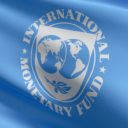

Looking through an economic lens, what’s the best country in the world?
If your benchmark is economic liberty, then Hong Kong is the answer according to both the Fraser Institute and Heritage Foundation.
If per-capita GDP or per-capita wealth is your benchmark, then Monaco wins the prize.
And you get different answers if you focus on specific features such as competitiveness (the United States) or ease of doing business (New Zealand).
You can also measure national performance by looking at key economic variables.
And that’s what Professor Steve Hanke of Johns Hopkins University has done.
In the sphere of economics, misery tends to flow from high inflation, steep borrowing costs and unemployment. …Many countries measure and report these economic metrics on a regular basis. Comparing them, nation by nation, can tell us a lot about where in the world people are sad or happy. …To answer this question, I update my annual Misery Index measurements.
Hanke explains the evolution of the Misery Index and how he puts together his version.
The first Misery Index was constructed by economist Art Okun in the 1960s as a way to provide President Lyndon Johnson with an easily digestible snapshot of the economy. That original Misery Index was just a simple sum of a nation’s annual inflation rate and its unemployment rate. The Index has been modified several times, first by Robert Barro of Harvard and then by myself. My modified Misery Index is the sum of the unemployment, inflation and bank lending rates, minus the percentage change in real GDP per capita. Higher readings on the first three elements are “bad” and make people more miserable. These are offset by a “good” (GDP per capita growth), which is subtracted from the sum of the “bads.”
You can see the entire list of 95 nations (some countries don’t report adequate data, so they aren’t counted) by clicking here.
And here are the nations with the best scores (remember, this is a Misery Index, so the top results are at the bottom of the list).

Professor Hanke comments on Thailand’s first-place results and Hungary’s second-place results.
Thailand takes the prize as the least miserable country in the world on the 2018 Misery Index. It’s 2018 rank of No. 95 out of 95 countries is a stunner. …Hungary delivered yet another stunner, making a dramatic improvement from 2017 to 2018. It comes in at No. 94 as the second least miserable country in the world. While the European Union and the international elites have thrown everything they can throw at Prime Minister Viktor Orbán, it’s easy to see why he commands a strong following at home.
Keep in mind, by the way, that Hanke’s list is a measure of annual economic outcomes.
So a relatively poor country can get a very good score. Indeed, they should get comparatively good scores according to convergence theory.
Assuming, of course, that they have decent policy.
However, if you look at the nations with the most miserable outcomes, you can see that many countries don’t have decent policy.

Here’s Hanke’s analysis of the world’s worst performers.
Venezuela holds the inglorious title of the most miserable country in the world in 2018, as it did in 2017, 2016, and 2015. The failures of President Nicolás Maduro’s socialist, corrupt petroleum state have been well documented… Argentina jumped to the No. 2 spot after yet another peso crisis. Since its founding, Argentina has been burdened with numerous economic crises. Most can be laid at the feet of domestic mismanagement and currency problems (read: currency collapses). To list but a few of these crises: 1876, 1890, 1914, 1930, 1952, 1958, 1967, 1975, 1985, 1989, 2001, and 2018.
For what it’s worth, if you look at the actual Misery Index numbers, Venezuela is in first place by an enormous margin. Chalk that up as another “victory” for socialism.
Moreover, I’m not surprised to see that Jordan, Ukraine, and South Africa are doing poorly. Sadly, there’s not much hope for improvement in those nations.
It’s also not a surprise to see Brazil on the list, though there may be room for optimism if the new government can adopt meaningful reforms.
P.S. Professor Hanke noted that Arthur Okun created the first Misery Index. Okun also is famous for his explanation of the equity-efficiency tradeoff. Okun supported redistribution in order to increase equality of outcomes, but he was honest and admitted that this would mean less prosperity. Too bad international bureaucracies such as the OECD and IMF don’t share Okun’s honesty.






